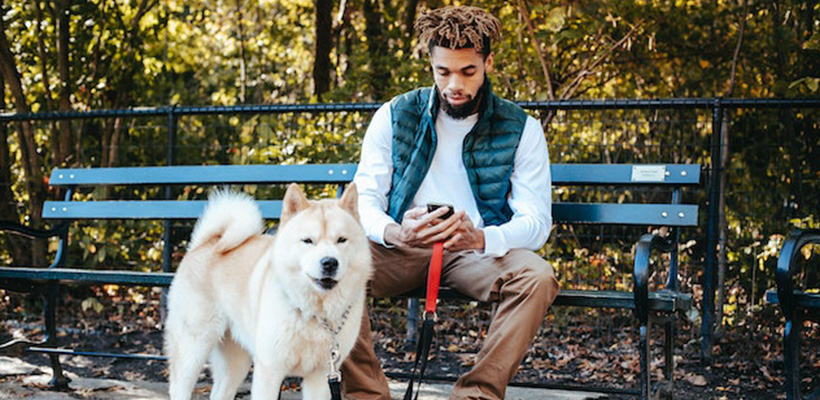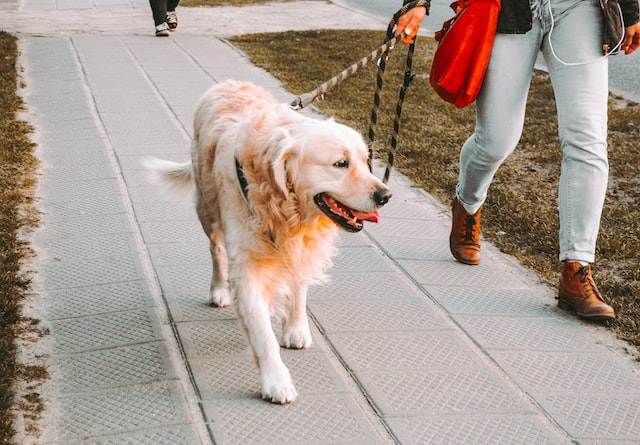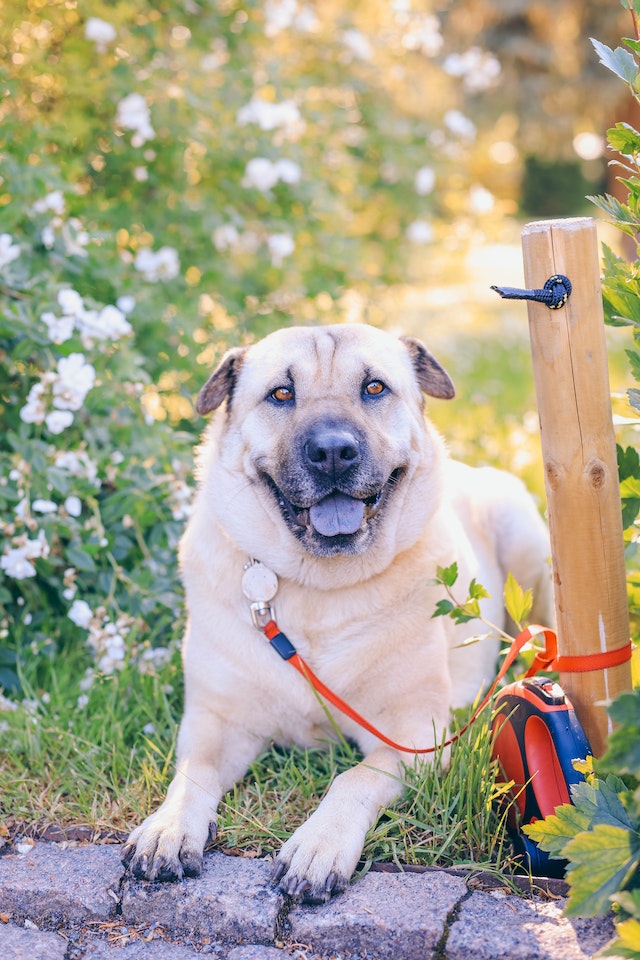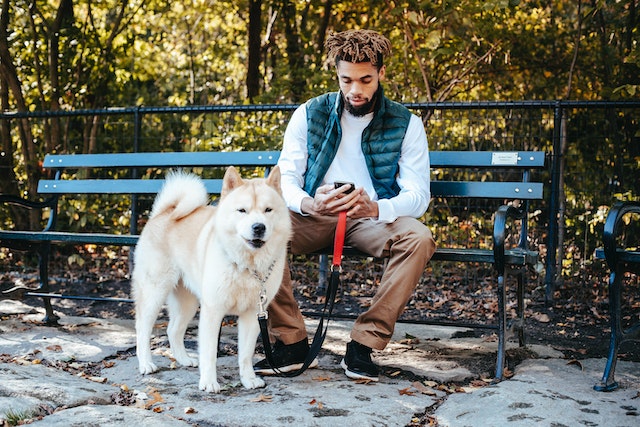
This article is contributed by guest writer Laura N. (FursnPaws).
What You Should Not Do When Walking Your Dog
Walking with your dog is one of the best activities that allows you to share great moments together. It provides a real bonding experience while giving your pooch a chance to exercise physically and mentally in an open space.
Both you and your furry friend should enjoy the walking and get the most out of it. For this to happen, there are a few things you should avoid doing when walking your dog.
When your dog feels uncomfortable during routine strolls, you risk ruining the activity. They will become resistant and might not willingly come along with you the next time.
In this post, we are going to highlight some of the things you should not do when walking your dog.
How To Prepare for A Walk
To get the most from a dog walk, you need to prepare early enough. You should get a clear-cut routine that aligns your dog’s mind with the upcoming activity.
Here are some of the things you need to get in order:
1. Find the best time
Morning hours are the best time for your furry pal to burn the unspent energy and start the day in a happy mood.
It also allows them to take their bathroom break in the open, which is innate to them. You should avoid taking your dog out when the weather is bad.
2. Check your dog’s health
Make sure that your walking companion is healthy before you head out. Check their ears, eyes, mouth, paws, and nose for any symptoms of ill health or wound.
If they have any unwanted signs, it is best to postpone the walk and attend to the problem immediately.

3. Dog-walking accessories
Have your dog collar, harness, leash, poop bag, water bottle, and some treats ready for the walk.
4. Get enough water
Make sure that your dog drinks enough water before you leave for the walk. You’ll want them to be hydrated throughout the walk so they stay cool and healthy.
5. Get sporty
Get the best sports gear to wear during the walks and runs. Have a comfortable pair of rubber shoes and a tracksuit/loose clothing to keep you comfortable during the walk.
6. Choose a safe route
You need to keep your dog safe through the walk and so it is important that you find a calm route that is free from distractions. You should also be conversant with the traffic rules of the area you have chosen to take your dog to.
Busy city streets are dangerous for dogs and should be avoided at all times. Taking your dog around the neighborhood or in a pet-friendly park is a better option.
10 Things You Should Not Do When Walking Your Dog
If you want to keep your dog safe during routine walks, avoid these pitfalls:

1. Using obsolete dog-walking equipment
The equipment that you use to walk your dog is an important part of the experience. It’s not just about how flashy they look, but also about how safe it is for your dog.
To ensure both you and your pooch enjoy the walk, you should choose high-quality products which will last through multiple walks without getting easily worn out.
Newer models of collars and leashes are better than older ones because they have more functionality, and are more durable & comfortable than the classic ones.
The newer no-pull harness will discourage your dog from pulling hence giving them a comfortable walk without choking.
2. Don’t let your dog wander off on their own
You need to constantly throw a close eye on where your furry pal treads. If they wander off, it could be dangerous for them and you too.
You should always lead your dog during the walk and ensure they do not follow a different track. It’s important to get familiarized with the neighborhood setting at all times just to know where your dog might be likely to go.
3. Using a short leash
A short leash limits your dog’s movement during walking by restricting them right beside your legs. It doesn’t give them a free space to interact with nature and take a potty break along the way, or even mark the territory.
This encourages your dog to pull you over in search of free space when walking and might run into other things and get injured.
A short leash is helpful when walking your dog in crowded streets where you need them to be close to you.
But when doing so across the park, get a long leash that will give them a wider space to sniff, jump, and roam around you.
4. Allowing your dog to pull on the leash
Dogs pulling on the leash might appear to be innocent and playful, but you should not let your dog do so.
When dogs pull on the leash, they cause damage to their necks and this can lead to choking, strangulation, eye problems, and other related complications.
When you allow your dog to pull, they are slowly taking charge and you might not be able to control them while walking.
If your dog is pulling on the leash, you can switch directions and see if they follow you.
5. Yanking on your dog’s leash
Yanking or jerking on your dog’s leash is not only painful, but also dangerous to dogs.
It can cause them to experience discomfort and pain around the neck area, which could lead to more serious health problems.
Furthermore, yanking can cause your dog to be fearful of putting on a leash which will make it very difficult to walk them again.

6. Being on your Phone
While you’re on your phone, your dog is likely to pull on the leash because of the distraction. This can cause injury and frustration on the side of your dog.
While you’re deep in a conversation or replying to texts, your walking pal can see that you have divided attention. This will push them to look for something to chase or play with.
Trying to multitask while walking can distract you and increase the risk of accidents.
You may also miss important signs that indicate danger such as sharp bends, uneven ground, or something in the path of your dog’s feet.
7. Not allowing your dog to sniff
Dogs have a very sharp sense of smell and they would always sniff a lot when walking. Denying your doggo a chance to snuffle the environment will only make their moods bad.
You might not know what your dog is sniffing, but rest assured there’s something in there. So, when you see them making a stop and hovering their nose around a particular area, just be patient and let your dog satisfy their instinct.
8. Allowing your dog to chew on plants
The leafy plants along the sidewalks might have just been sprayed with pesticides. You should therefore discourage your dog from chewing on plants during a walk.
Some plants are toxic to dogs and might cause life-threatening health problems when eaten even in small amounts. If your dog has eaten an unknown plant, you should call the vet immediately and take a sample of the ingested plant with you.
9. Paying attention to other dogs
Dogs are territorial in nature, and they can get anxious when they see other dogs snatching your attention. If you’re out on a stroll with your pooch and another dog comes along, it’s best to keep moving without paying attention to the other dog.
This will help prevent any potential scuffle between the two. It will also assure your pooch that you care about them.
10. Going on the same route every day
Some pet parents usually walk their dogs along the same pathway in every adventure. This is a possible explanation why your walking buddy may want to lead the way; because they know the route very well.
You should enrich your dog’s outdoor ventures by treading on a new path once in a while. You just need to ensure that the place is safe and pet-friendly.
In Summary
What should you not do when walking your dog? Do not engage in any activity that will compromise your dog’s safety, or health, or harm the hosting environment and other road users.
Strolling with your dog while giving them full attention and protection is a sure way to enrich your bonding. Happy walking!

Amy
November 23, 2022 at 5:39 AMThank you. I see where I was doing somethings incorrectly. We will have better experiences and safer
PSR3648
December 2, 2022 at 11:06 PMI am not a dog owner, but dog owners should Always pick up their dog’s waste no matter Where the dog deposits it.
Cheryl Zamora
December 10, 2022 at 8:05 PMi love to walk anytime after it rains